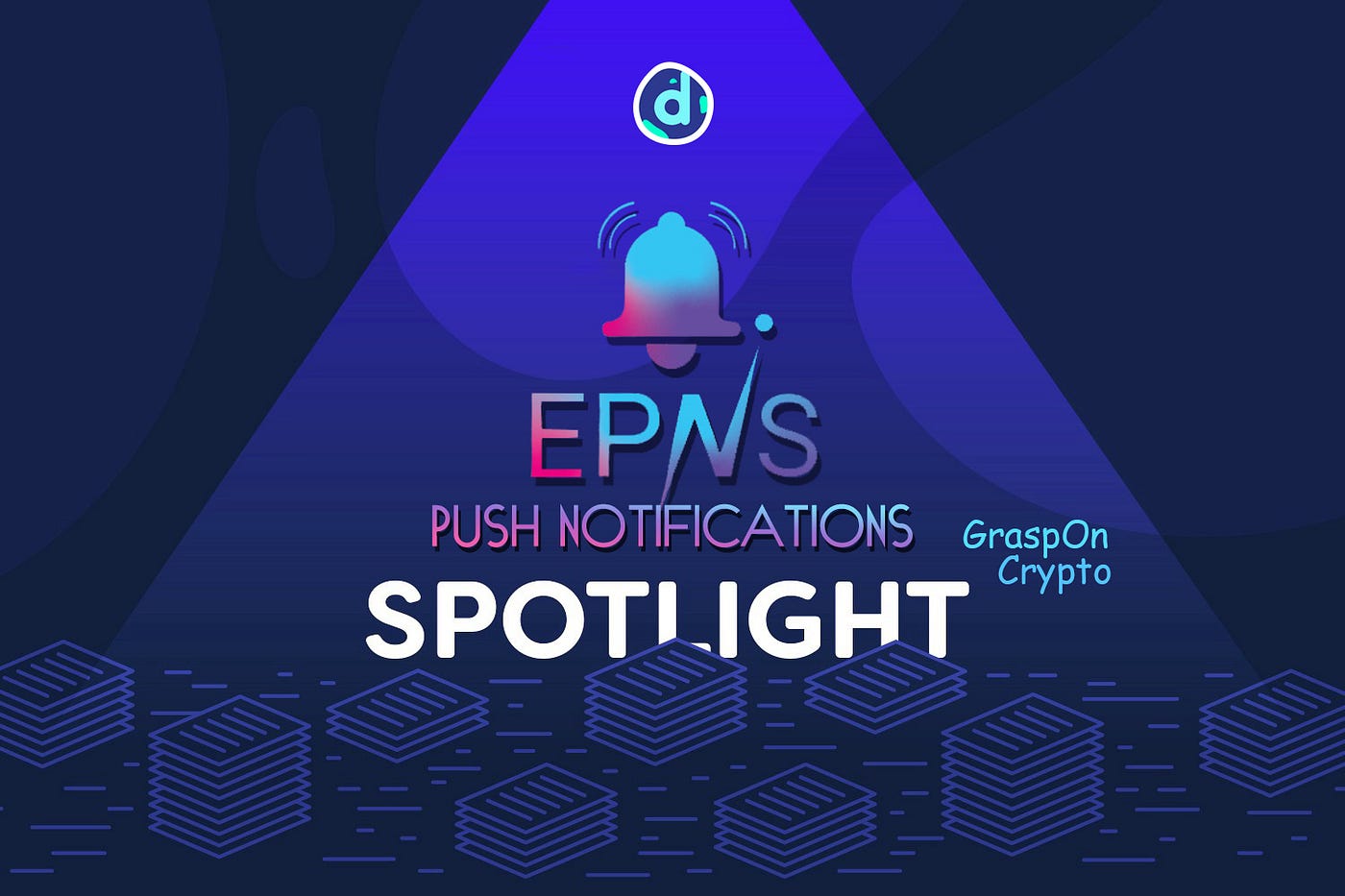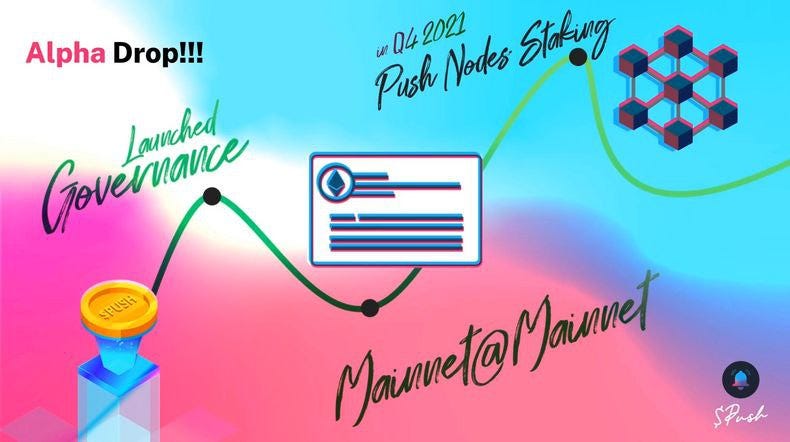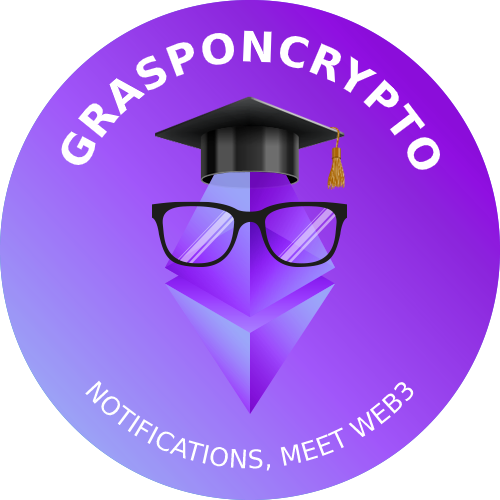How a protocol for blockchain based notifications enables any dApps or smart contracts to send blockchain agnostic, incentivized and dynamic notifications.

Posted on District0x Spotlight Series
Hello unstoppable web3 notifications!
Have you ever wished you could get notified if a new airdrop or token release was coming up? Have you ever regretted forgetting an NFT launch? Have you ever wished you could get a notification if gas prices drop below a certain threshold? Have you ever wished you’d get a notification before your collateral gets liquidated due to price volatility? Have you ever… you get the idea.
Notifications, meet web3. Ethereum-Push-Notification-Service (EPNS) is a great project with a wonderful team behind it. EPNS is bridging one of the largest gaps in web3 crypto world — Notifications!
Summarized, EPNS will bring notifications to all of web3 in an unstoppable, decentralized, chain agnostic, platform agnostic manner. Iphone, Android, PC, brave, firefox, etc. doesnt matter, Notifications are coming our way. Polygon, Ethereum, Solana, etc. doesnt matter, notifications are coming our way!
Using blockchain’s public ledger and IPFS, EPNS will be able to provide censorship-resistent notifications to any user anywhere in the world without borders and integrating into your crypto address. I believe as this project goes, more projects such as metamask will integrate the protocol natively into their application, making it easier to integrate and find channels and subscriptions based on the contracts you already interact with directly from your wallet. Imagine it like email where you can use many different applications (outlook, thunderbird, iMail, et al) to do the same action since they all use the standard protocols.
Collateralized & interest-bearing for consumers
Now onto the fun part, consumers — such as yourself — can actually earn crypto simply by subscribing to a channel. Neat! What? How, you ask? Im glad you asked. In order for a provider to be allowed to create a channel on the EPNS protocol, they will have to put up a stake. In the whitepaper, they list 50 DAI as a minimum, though I imagine in reality projects will put up more collateral than that in order to encourage more consumers, thus having greater reach.
This 50–?k DAI stake will then be placed in an AAVE interest-bearing protocol. From there, the interest earned will be distributed to consumers of the channel and compounded as long as the user lets it accumulate. The idea for the interest may not be finalized. Originally the idea was to grant that interest to subscribers based on subscriber longevity — but cross-chain difficulties made this problematic. All channels and their DAI stake will be created on Ethereum Mainnet, so how does one pay subscribers who are subscribed to channels on Polygon, or Arbitrum, etc? The answer is “not easily, if at all”; so, the team scrapped that idea.
In Ethereum-Push-Notification-Service (EPNS)’s Q3 update article they mention the new functionality means they “are pivoting the earning to Push Token holders”. I understand this to mean they will be tracking the users and their subscriptions, and use this data to determine compensation down the road when they come up with a valid, workable solution.

$PUSH
$PUSH — You didnt think you were getting out of here without mention of a token, did you? Thats right, along with EPNS comes its very own token. $PUSH, which you get at UniSwap, has several use cases. Whenever I hear about a new token, the first question I ask is, “why?” — more often than not the answer is, “because…uhmmmm…” — but in this case there are reasons.
- Governance — yes, EPNS has a DAO and $PUSH is the governance token
- Fees — In order for services to send notifications out using the EPNS network, they will have to pay microtransaction fees in $ETH or $DAI. These fees will then be used to buy back $PUSH and distribute back to token holders [note — I’m having trouble finding documentation on this but it is briefly described in the whitepaper and mentioned by EPNS co-founder Richa in an AMA with Decentralized Club and in an Ethereum-Push-Notification-Service (EPNS) FAQ article]
- Channel Subscription Incentives — Similar to the Fee Pool above, the channel incentives to subscribers (remember the AAVE protocol where the Channel Creation fee goes?) will also be used to buyback $PUSH to be distributed to subscribers.
- The main use case for $PUSH token will be as a utility token for the EPNS protocol. As stated in their whitepaper, “$PUSH is a non-refundable functional utility token which will be used as the medium of exchange between participants on the EPNS protocol […] use $PUSH as a means to enable usage of and interaction within the EPNS protocol.”
- Finally, [note: I am taking some liberties here and making assumptions and educated guesses as there is little to no documentation, and only an alpha leak by Harsh Rajat himself at Messari Mainnet] $PUSH will be likely be used in a method similar to ethereum’s consensus layer, or Eth 2 as commonly referred. More on that below.

Push Node Staking
That image above…thats it. Thats all I have to go off of here. Thats all the documentation there is on Push Nodes Staking.
Again, I’m really taking a lot of liberty here with assumptions and guesses as there is no documentation of this functionality except as mentioned in the bullet point above.** PLEASE TAKE THIS WITH A GRAIN OF SALT, ITS ALL AN EDUCATED GUESS AND WILL NOT BE COMPLETELY ACCURATE!**
What I guess is that this means EPNS node operators would likely stake a certain amount of $PUSH in a node in order to be granted access to service the protocol. This $PUSH would be staked against their behavior and risk slashing if the node attempts malicious behavior. If behaving properly and supporting the platform and network, however, these node operators would earn additional $PUSH in the form of fees paid by the Channel owners to have notifications pushed to client.
The Channel owners will be required to pay micro transaction fees for the EPNS Push Nodes to monitor the smart contracts and publish notifications to the various protocols. These fees will likely be split between Node Operators (those who have staked $PUSH in a node and support the EPNS publishing network) and the fee pool. Remember the fee pool is mentioned in the whitepaper:
The fee pool is divided into certain ratios which are then shared accordingly as per the governance game theory and voting, so as to incentivize protocol participation.
- *NOTE: Since I originally drafted this section, Ethereum-Push-Notification-Service (EPNS) has released another article focused on PUSH nodes. The information was very technical and covers how the network will function, and not how one stakes, nor any information in that regard. You can read more on it here, but it really touched on topics outside the scope of this article.
Community Registry: An EPNS Channel Marketplace
This all brings us to the next question, and possibly the most relevant in the context of district0x: A marketplace for verified channels?
How can users be sure the channel they’re subscribing to is safe? All types of malicious actors could create channels pretending to be one project or another, meanwhile sending phishing notifications to unsuspecting users. Other ne’er-do-wells could pose as more famous users or groups and send spam or notifications about projects that are not truly endorsed by said FamousUserX or FamousGroupY —picture someone posing as Vitalik and sending out false information to pump and dump.
In one of my previous articles, “Souvenir, meet web3”, we touched upon District0x’s capability of creating a marketplace TCR. TCR stands for Token Curated Registry, a mechanism which creates a community-governed marketplace. One which leverages tokenomics to incentivize behavior beneficial to the community, while disincentivizing selfish behavior. Again, you can learn more by watching this video.
So, back to the question, “How do we keep subscribers safe?”. By creating a verified channels list using a Token Curated Registry. A decentralized, unstoppable marketplace maintained by the community where Ethereum-Push-Notification-Service (EPNS)users can discover community-trusted channels with confidence!
Ethereum-Push-Notification-Service (EPNS)has already distributed their $PUSH token, so the difficult task of figuring out how to fairly distribute the TCR token is already done — just use $PUSH!!
How might this look? Well users would join the EPNS Verified Channel Marketplace using their web3 account which holds $PUSH. Teams or Users who wish to publish a verified channel would stake some $PUSH in order to submit the channel for community verification. There would then be voting period where users could stake their $PUSH either “For” or “Against” this new channel. If the new channel passes, it gets a verified tag and the users would then receive their tokens back, as well as a share of any tokens which were incorrectly staked “Against” the channel.
If a malicious actor attempts to get a channel verified and the community catches them, any users who stake $PUSH against said channel would confiscate the actor’s collateral and split it amongst those who took on the responsibility of protecting the community!
In conclusion, I believe District0x tools for creating a TCR Marketplace would be a great fit for Ethereum-Push-Notification-Service (EPNS)to create a decentralized marketplace for channel verification without the burden landing on the central team themselves.
PS — Congratulations on getting this far, please DM on Twitter to receive the POAP below. (I know, I know, how archaic! Unfortunately POAP has become so popular, farmers have been sweeping automated distribution mechanisms clean of all available POAPs — so please forgive me and the POAP team while they navigate these rough waters)
